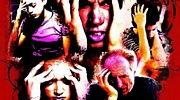|
|
 Acne (1,500) Acne (1,500)
 Addictions (1,500) Addictions (1,500)
 Advice (1,500) Advice (1,500)
 Allergies (1,092) Allergies (1,092)
 Alternative Medicine (1,500) Alternative Medicine (1,500)
 Anti Aging (1,500) Anti Aging (1,500)
 Breakup (1,500) Breakup (1,500)
 Cancer (1,499) Cancer (1,499)
 Dental Care (1,500) Dental Care (1,500)
 Disabilities (1,500) Disabilities (1,500)
 Divorce (1,500) Divorce (1,500)
 Elderly Care (1,498) Elderly Care (1,498)
 Goal Setting (1,500) Goal Setting (1,500)
 Hair Loss (1,500) Hair Loss (1,500)
 Health and Safety (1,497) Health and Safety (1,497)
 Hearing (1,500) Hearing (1,500)
 Law of Attraction (1,499) Law of Attraction (1,499)
 Marriage (1,500) Marriage (1,500)
 Medicine (1,497) Medicine (1,497)
 Meditation (1,499) Meditation (1,499)
 Men's Health (1,500) Men's Health (1,500)
 Mental Health (1,500) Mental Health (1,500)
 Motivational (1,500) Motivational (1,500)
 Nutrition (1,495) Nutrition (1,495)
 Personal Injury (1,499) Personal Injury (1,499)
 Plastic Surgeries (1,500) Plastic Surgeries (1,500)
 Pregnancy (1,496) Pregnancy (1,496)
 Psychology (1,500) Psychology (1,500)
 Public Speaking (1,500) Public Speaking (1,500)
 Quit Smoking (1,500) Quit Smoking (1,500)
 Religion (1,499) Religion (1,499)
 Self Help (1,500) Self Help (1,500)
 Skin Care (1,500) Skin Care (1,500)
 Sleep (1,500) Sleep (1,500)
 Stress Management (1,500) Stress Management (1,500)
 Teenagers (1,492) Teenagers (1,492)
 Time Management (1,500) Time Management (1,500)
 Weddings (1,500) Weddings (1,500)
 Wellness (1,500) Wellness (1,500)
 Women's Health (1,500) Women's Health (1,500)
 Women's Issues (1,500) Women's Issues (1,500)
|
You would have been bombarded by television commercials and print ads about the wonders of the new sleeping medications. However, you wouldn’t have been confronted withstrong warnings either of their potential risks.
Multiple adverse reports have emerged ever since the introduction of the non-benzodiazepines (NBZ) class of drugs in the 1990s. These include the highly advertised Ambien, Lunesta, Sonata and Remeron. Although the NBZs eventually replaced the older class of drugs as the first line treatment of insomnia, they seem just as likely to cause amnesia and erratic behavior. It appears that reports of sleep-eating and sleep-driving on Ambien are reminiscent of problems nearly 20 years ago with Halcion, which was banned in some countries.
As of last year, the U.S. Food and Drug Administration (FDA) required manufacturers to not just include strong warnings in the labels but also develop warning guides for distribution with virtually all hypnotic sedative sleeping medications. These Patient Medication Guides are handouts given to patients, families and caregivers when the sleeping medication is dispensed.
"There are a number of prescription sleep aids available that are well-tolerated and effective for many people," said Steven Galson, M.D., MPH, director of FDA’s Center for Drug Evaluation and Research. "However, after reviewing the available post-marketing adverse event information for these products, FDA concluded that labeling changes are necessary to inform health care providers and consumers about risks."
The warnings are about the following potential adverse events:
- Anaphylaxis (severe allergic reaction).
- Angioedema (severe facial swelling).
- Sleep-driving.
- Preparing and eating food while asleep.
- Making phone calls while asleep.
Allergic reactions can occur as early as the first time the sleeping medication is taken.
The sleeping medications that are the focus of the revised labeling include the following 13 products:
-Ambien/Ambien CR (Sanofi Aventis)
-Butisol Sodium (Medpointe Pharm HLC)
-Carbrital (Parke-Davis)
-Dalmane (Valeant Pharm)
-Doral (Questcor Pharms)
-Halcion (Pharmacia & Upjohn)
-Lunesta (Sepracor)
-Placidyl (Abbott)
-Prosom (Abbott)
-Restoril (Tyco Healthcare)
-Rozerem (Takeda)
-Seconal (Lilly)
-Sonata (King Pharmaceuticals)
The problems that arose were worldwide. The World Health Organization (WHO) Collaborating Center for International Drug Monitoring received 867 reports from 24 countries of people encountering amnesia, often coupled with confusion, agitation and other behavior disturbances, while taking the new sleeping medications, like Lunesta and Ambien, through March, 2007.
A graphic artist in New London, Wis., said she thought she was sleeping well on Ambien but woke to find her wrist broken, apparently in a fall while sleepwalking, she wrote in an e-mail exchange. There were others who have gone on eating binges like the case of a woman who gained 23 kilograms over seven months while taking zolpidem. “It was only when she was discovered in front of an open refrigerator while asleep that the problem was resolved,” according to the report.
Others have driven their cars and engaged in other activities that they later cannot remember. The Wall Street Journal relates one story of a woman who painted her front door in her sleep, and in some cases, people have had serious car accidents and even set fire to their homes while in the seemingly-hypnotic state sometimes caused by the drugs.
Although all sedative-hypnotic sleeping medications have these risks, there may be differences among products in how often they occur. For this reason, FDA has asked that the drug manufacturers conduct clinical studies to investigate the frequency with which sleep-driving and other complex behaviors occur with their respective products.
|
|
|



